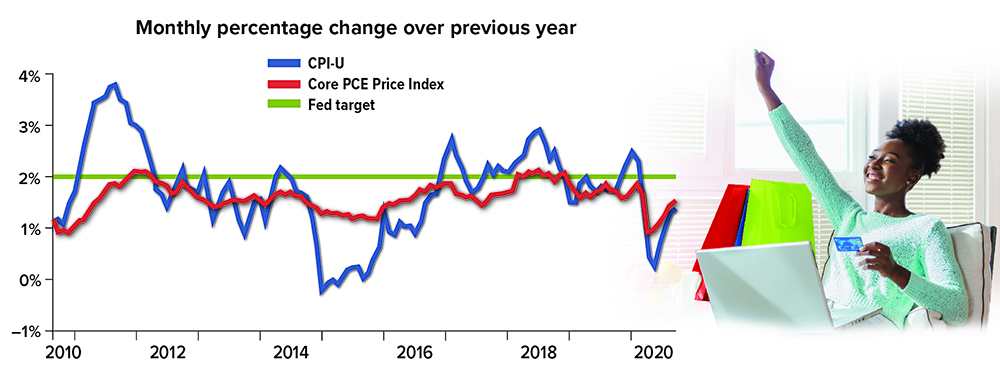12 Mar Different Inflation Measures, Different Purposes
 The inflation measure most often mentioned in the media is the Consumer Price Index for All Urban Consumers (CPI-U), which tracks the average change in prices paid by consumers over time for a fixed basket of goods and services. In setting economic policy, however, the Federal Reserve Open Market Committee focuses on a different measure of inflation — the Personal Consumption Expenditures (PCE) Price Index, which is based on a broader range of expenditures and reflects changes in consumer choices. More specifically, the Fed focuses on “core PCE,” which strips out volatile food and energy categories that are less likely to respond to monetary policy. Over the last 10 years, core PCE prices have generally run below the Fed’s 2% inflation target.
The inflation measure most often mentioned in the media is the Consumer Price Index for All Urban Consumers (CPI-U), which tracks the average change in prices paid by consumers over time for a fixed basket of goods and services. In setting economic policy, however, the Federal Reserve Open Market Committee focuses on a different measure of inflation — the Personal Consumption Expenditures (PCE) Price Index, which is based on a broader range of expenditures and reflects changes in consumer choices. More specifically, the Fed focuses on “core PCE,” which strips out volatile food and energy categories that are less likely to respond to monetary policy. Over the last 10 years, core PCE prices have generally run below the Fed’s 2% inflation target.

Sources: U.S. Bureau of Labor Statistics and U.S. Bureau of Economic Analysis, 2020 (data for the period September 2010 to September 2020)
This information was developed by Broadridge, an independent third party. It is general in nature, is not a complete statement of all information necessary for making an investment decision, and is not a recommendation or a solicitation to buy or sell any security. Investments and strategies mentioned may not be suitable for all investors. Past performance may not be indicative of future results.
Prepared by Broadridge Advisor Solutions Copyright 2021.
